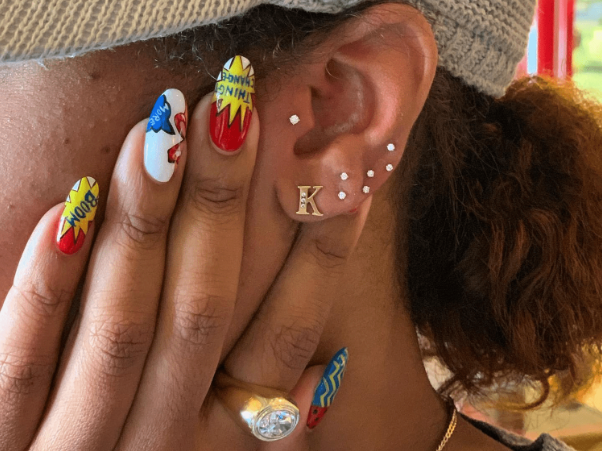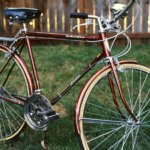Ear gauges have become more than just a trend; they’ve evolved into a statement of individuality and self-expression. From subtle styles to bold designs, many people are embracing this unique form of body modification. But as you embark on your gauging journey, understanding the importance of sizing becomes crucial.
Have you ever wondered why an ear gauge size chart is essential? Choosing the right size can significantly impact your comfort and health while ensuring that your ears evolve beautifully. Let’s dive deeper into what makes proper sizing indispensable for anyone considering or currently using ear gauges.
What are ear gauges and their popularity
Ear gauges are special jewelry pieces designed to stretch the earlobe. They come in various materials, sizes, and styles, allowing for endless customization. From sleek metal tunnels to colorful acrylic plugs, there’s something for everyone.
Their popularity has surged over the years as more individuals seek ways to express their personality. Social media influencers and musicians often showcase stunning ear gauge designs, inspiring fans to explore this unique form of body art.
Additionally, cultural influences play a significant role. Many indigenous cultures have long embraced gauging as a rite of passage or symbol of status. This rich heritage adds depth to modern practices and offers a deeper connection for enthusiasts.
As fashion continues to evolve, ear gauges remain a bold choice that reflects personal style while breaking traditional norms around body modification.
The importance of proper sizing for ear gauges
Proper sizing is crucial when it comes to ear gauges. A perfect fit ensures comfort and enhances the aesthetic appeal of your body art.
When gauges are too tight, they can cause pain and irritation. On the other hand, if they’re too loose, you risk losing them entirely. Finding that sweet spot is essential for both appearance and health.
Moreover, proper sizing helps prevent complications such as tears or infections. The delicate skin in your ears needs attention; gauge size plays a significant role in maintaining its integrity.
A well-fitted gauge allows for easier stretching over time without unnecessary stress on the tissue. This gradual approach leads to healthier lobes and better results down the line.
Investing time in understanding sizes pays off significantly. It’s about more than just style—it’s also about taking care of your body while expressing yourself creatively.
The potential risks of wearing incorrect sizes
Wearing incorrect sizes for ear gauges can lead to a range of complications. When the gauge is too small, it may cause discomfort and irritation. This can result in inflammation or even infection.
On the other hand, oversized gauges pose their own risks. They might stretch your earlobes beyond recovery, leading to sagging or tearing. Once stretched too far, reversing the damage often requires surgical intervention.
Additionally, ill-fitting gauges may increase the likelihood of losing them altogether. A loose fit means they could slip out without notice, leading to frustration and potential loss.
Furthermore, wearing mismatched sizes can create an uneven appearance that detracts from your look. Consistency matters in style as much as comfort; don’t overlook this vital aspect when choosing your gauges. Prioritizing proper sizing isn’t just about aesthetics—it’s about ensuring your ears remain healthy and well-cared-for.
Understanding ear gauge size chart and measurements
Navigating the world of ear gauges can be confusing, especially when it comes to sizing. An ear gauge size chart is a vital tool for both beginners and seasoned enthusiasts.
Gauges are measured in millimeters or inches, with sizes ranging from 20 (small) to 00 (large). Each increment represents a significant jump in size. Understanding this scale helps prevent awkward fits.
Many charts also include conversions between different measurement systems. This allows you to switch effortlessly between metric and imperial units if needed.
It’s crucial to note that individual anatomy varies. What fits one person perfectly might not suit another. Always refer back to the size chart for guidance before making a purchase.
Familiarizing yourself with these measurements aids in achieving your desired aesthetic while ensuring comfort throughout your gauging journey.
How to properly measure your ears for gauges
Measuring your ears for gauges is a straightforward process that requires precision. Start by gathering the right tools: a ruler or caliper and, if possible, a flexible measuring tape.
First, clean your ears thoroughly to ensure accurate measurements. You want to avoid any buildup that might affect size.
Next, gently pull down on your earlobe to stretch it slightly. Measure the diameter of the hole created by stretching; this is where you will gauge sizes. Take care not to measure too tightly or loosely.
It’s also wise to check both ears separately as they can differ in size. Record these measurements clearly for reference when selecting ear gauges.
Remember that sizing varies between materials and styles. Always consult an ear gauge size chart before making your purchase decision for the best fit possible.
Tips for finding the right size and fit
Finding the right size and fit for your ear gauges can feel overwhelming. Start by familiarizing yourself with the different gauge sizes available. This knowledge helps you make informed choices.
Consider starting with a smaller size if you’re new to stretching. Gradual changes are easier on your ears and minimize discomfort.
Don’t shy away from utilizing an ear gauge size chart as it provides clear comparisons between millimeters and inches, ensuring you select appropriately.
When trying on new gauges, pay attention to how they sit in your lobes. They should feel secure but not overly tight, allowing for natural movement without irritation.
Always listen to your body’s signals during this process. If something feels off or painful, reevaluate your choice before proceeding further with sizing up or down.
Conclusion
Ear gauges have grown in popularity over the last few decades. Many people choose them as a form of self-expression, embracing unique styles that reflect their personality. However, with this trend comes the necessity for proper education on sizing and care.
Proper sizing is crucial when it comes to ear gauges. An incorrectly sized gauge can lead to discomfort or even injury. Wearing a size too small can cause tearing or permanent damage to your earlobe, while sizes that are too large may stretch your ears beyond recovery. This makes understanding an ear gauge size chart essential for anyone considering gauging their ears.
Understanding the potential risks associated with improper sizing cannot be overstated. Misjudging sizes could result in painful complications such as infections or keloids, which are raised scars resulting from skin trauma. These issues detract from the aesthetic appeal of wearing gauges and pose significant health concerns.
To avoid these pitfalls, familiarize yourself with an ear gauge size chart and learn how measurements work. Gauge sizes typically range from 20 (the smallest) up to larger sizes like 00G (10mm). Each increment represents a specific diameter; knowing this helps you make informed decisions about what will fit best for you.
Measuring your ears accurately sets the foundation for successful gauging experiences. Use calipers or measuring tape designed for body modifications to get precise figures without guesswork involved.
Finding the right size involves more than just relying on numbers; comfort matters just as much as aesthetics do! Experimenting with different materials—like silicone versus metal—and paying attention to how your body reacts during wear can help ensure that you find both style and comfort in one solution.
The journey into ear gauging should be enjoyable rather than stressful! Taking time to understand all aspects—from proper measurement techniques using an accurate ear gauge size chart—to finding what feels good ensures you’ll love every moment spent sporting those stylish accessories.




















